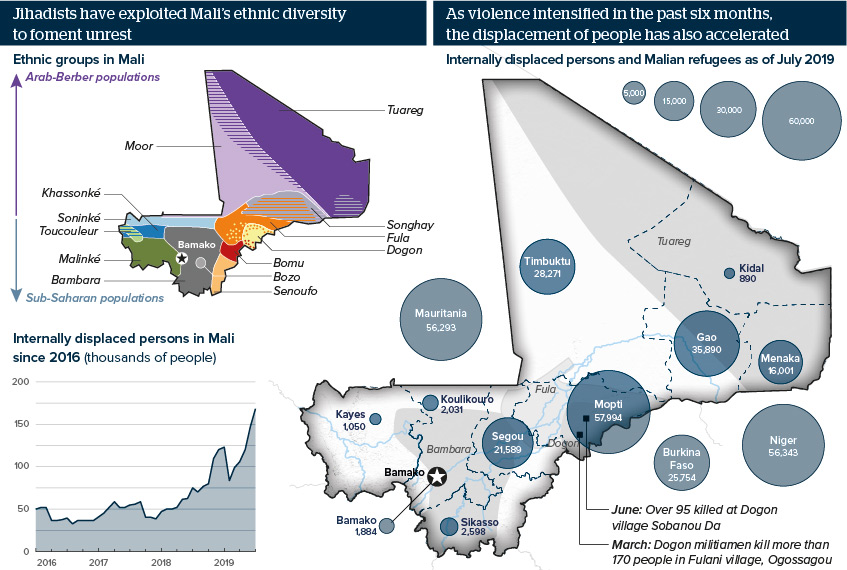Reprisals fuel central Mali violence
Violence in central Mali has taken the form of reprisal attacks primarily between ethnic Fulani and Dogon communities
Source: OECD “An Atlas of the Sahara-Sahel: Geography, Economics and Security” (2014); UNHCR; OCHA
Outlook
Insecurity in central Mali saw a relative lull in July following visits from Prime Minister Boubou Cisse, UN and AU officials and a delegation from the Economic Community of West African States (ECOWAS). Cisse also promised the deployment of 3,600 soldiers. However, governance mismanagement that fuels grievances has not been addressed.
A ceasefire between the Dogon and Fulani communities signed on August 5 aims to calm the cycle of reprisal attacks that has engulfed the ethnically mixed central regions of Mopti and Segou, resulting in thousands of internally displaced people.
However, the ceasefire does not include jihadist groups. On August 21, an attack by the jihadist Group of Support for Islam and All Muslims (JNIM) on a convoy in Mopti left five soldiers dead. Absent solutions to grievances that encourage people to join jihadist causes, such groups could reignite ethnic tensions.
Impacts
- Lack of state capacity to protect communities is a key driver for the violence.
- In areas where the army has reach, it is often responsible for gross abuses and collective punishment, fuelling extremism and violence.
- Insecurity could drive up migration towards Europe.
- Spillover violence could destabilise further parts of Niger and Burkina Faso.
See also
- Mali’s UN force is in danger of collapse - Dec 20, 2022
- German policy towards Sahel will be cautious - Jul 14, 2022
- Massacre could push Mali into further isolation - Apr 13, 2022
- Security force abuses in the Sahel will persist - Jun 23, 2020
- Economic improvements in Mali will be too slow - Feb 21, 2020
- France and Mali apply dual strategy to Sahel jihadists - Feb 11, 2020
- Elections are unlikely to help resolve Mali conflict - Feb 4, 2020
- Niger has few security cards to play - Jan 13, 2020
- New ECOWAS force may sideline G5 Sahel - Oct 29, 2019
- Mali peace is slipping away - Oct 8, 2019
- Malian stability is on a downward spiral - Oct 2, 2019
- Poor infrastructure will sustain north Mali separatism - Sep 27, 2019
- West Africa's Fulanis face mounting pressures - Aug 1, 2019
- More graphic analysis
